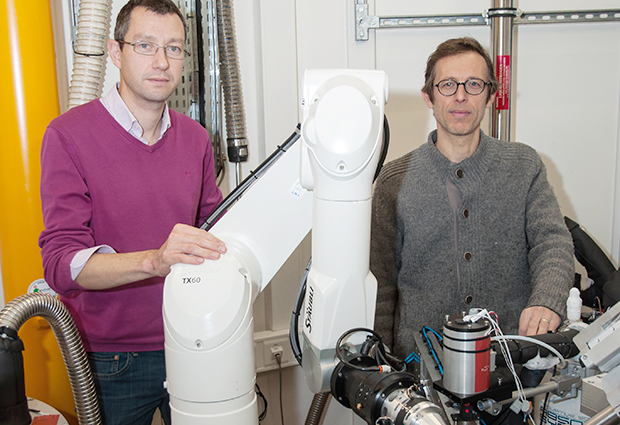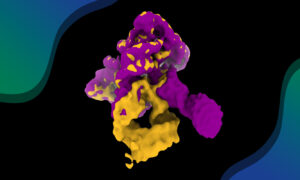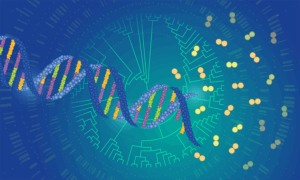
MASSIF step forward
A new era of automation has dawned at the ESRF in Grenoble. In September 2014 the first of the Massively Automated Sample Selection Integrated Facility (MASSIF) beamlines opened – but users will never physically come to the beamline.

By Matthew Bowler
MASSIF1, operated by the EMBL/ESRF Joint Structural Biology Group, offers a unique, fully automated service for sample evaluation and data collection from crystals of macromolecules. The new service is not designed to replace all user visits to the synchrotron but rather to do the hard work of screening crystals through the night, freeing researchers to spend time on more challenging data collection problems and study the underlying biology.
Users interact with the beamline by describing experimental requirements that are used by the beamline software to set data collection parameters and results are viewed via a database. Beam time is booked flexibly and samples then enter a queuing system. The service is made possible by RoboDiff – a new ESRF-developed sample changer that also acts as a goniometer –, a highly intense X-ray beam and complex workflows that fully evaluate samples, identify and centre on the best parts of the crystal, and collect diffraction data sets optimised for maximum resolution with minimised radiation damage. In less than two months of operation more than 2.3 million diffraction images have been collected from 1422 samples ranging from initial hits from crystallisation experiments to large-scale data set collection for drug discovery programmes.

As MASSIF1 is fully automatic, data are collected for the first time in a consistent manner and should allow the accumulation and comparison of a large amount of information that was previously unknown, including the exact dimensions of crystals and deeper information about their quality. Once the beamline has been running for an extended period, it will provide a treasure trove of additional information to feed back into crystallisation experiments and the software used to collect the data.
It will provide a treasure trove of additional information to feed back into crystallisation experiments and the software used to collect the data.
The automatic routines developed are often able to locate crystals more effectively than the human eye and in many cases have obtained higher resolution data sets as all positions within a sample can be evaluated for diffraction quality. Initial experiments have been very successful, with users complimenting the accuracy, efficiency and simplicity of the facility. “The results [obtained] are currently causing excitement amongst a project team here,” said Rob van Montfort, a team leader at the Institute of Cancer Research in the UK. “It is reassuring that the programs found a crystal we missed on the manual run,” said Bernhard Rupp, a visiting professor at Innsbruck Medical University. “The workflow was consistent and accurate, with excellent centering,” added Nora Cronin, a facility manager at the Institute of Cancer Research.
It is clear that MASSIF1, eventually perhaps in closer combination with the developments made at EMBL Grenoble in automatic crystal mounting using CrystalDirect, will provide a new level of automation in structural biology that should yield exciting results in the near future.


